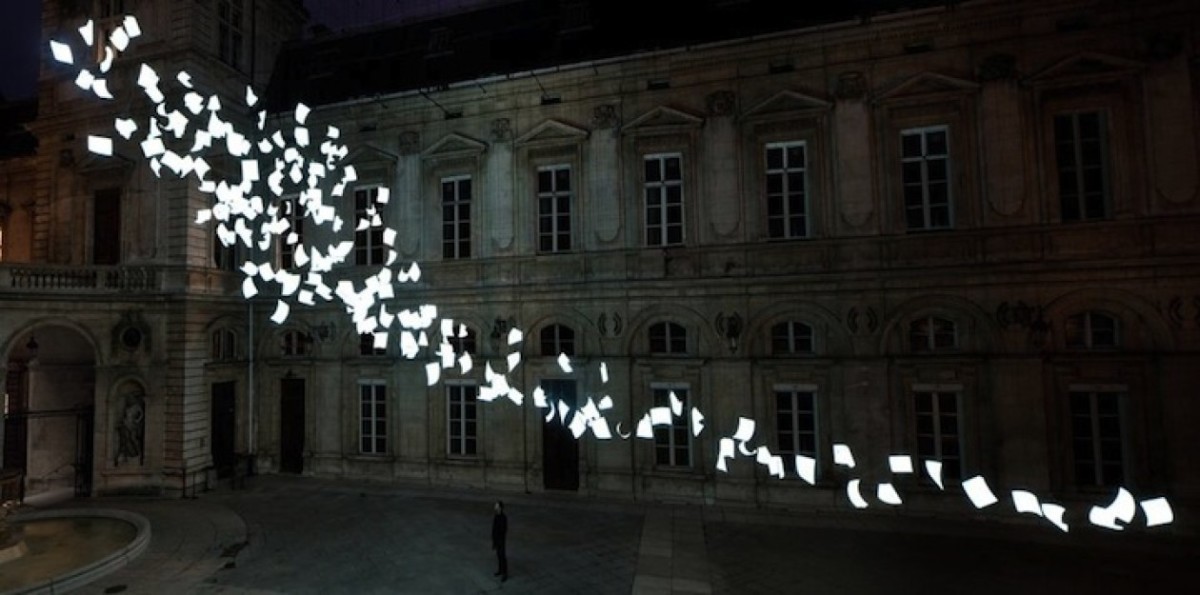
If you haven’t had a chance to see my post describing the cut-up experiment we did, click here and check it out. This post highlights some of the great poems that PreK-fourth graders did.
William Burroughs once said, “Cut up Rimbaud, and you are in Rimbaud’s place.” We embarked on this poetry experiment to put us more in the place of the Olympics broadly, and the Olympic Creed specifically. In the process of cutting up the creed and playing around with it word for word, with the goal of making a poem out of those words, really powerful learning happened. Students PreK through fourth grade were carefully studying words, exploring the different meanings of words, discovering different ways to use words, creating sophisticated poems where the meaning was below the surface, and using the shape of the piece to create that meaning.
This poem, Norway, is from a kindergarten class. They wrote the poem together. The teacher teacher started the process in true Tristan Tzara style by putting all of the cut up words in a paper bag. The students picked a word our of the bag, laid the word down on a big board on the floor, and then passed the bag to the next students who did the same. The students used the dimensions of the board to determine line-length. Then, once all of the words had been picked, the teacher made a brilliant move by creating a set of constraints for the next phase of the experiment: the students could either move a word, remove a word, or leave the poem the way it was. The game continued with each student scooting out of the circle and deciding what her next move was. They would read the poem aloud to get it in their head before the move and then would read it again when the move had been made. Gasps, oohs and ahs, and laughs filled the room. Some students would express their disagreement with a move. Other moves were met with universal approval. They were all being close readers, thinking creatively and strategically about the next move that they wanted to make. This process went around the circle three times. And is it progressed, more and more words were removed. I was reminded of Niedecker’s “no break from this condensery.” The students paired the poem down to its essentials. What made it even more interesting and funny was the addition of the title, Norway. One could read the poem as a commentary on the country as well as the Olympics. Once the process went around the circle three times, the poem was complete, the group read it aloud again to hear the music in it, and then decided to hang it on their classroom door.
 The other kindergarten class did it slightly differently, more of a prose approach, keeping all of the words in and shuffling them around on the magnetic white board. After a while, they were stumped, they had a few words that just didn’t seem to work with the poem that they were creating.
The other kindergarten class did it slightly differently, more of a prose approach, keeping all of the words in and shuffling them around on the magnetic white board. After a while, they were stumped, they had a few words that just didn’t seem to work with the poem that they were creating.

They tried and tried, but adding the words just didn’t sound right. Should they just leave them out? The group worked to answer that question and in the process came up with the idea of using those words as the title for the piece. Hence, the title of the piece: To Take In The Olympic Games. Below, you’ll see one of the kindergarten students pointing to the words as the group as a whole reads it aloud.
Other students took a narrative approach as well, some to greater affect than others. The trick with the narrative turn is that it encourages the reader to read it like any narrative, and the choppy, broken, style of the text can be a bit off-putting. At other times, this move can be used to create some rather interesting pieces.
 It’s important to remember that this writing game is a mix of deep literacy learning and artistic creation. Sometimes the works of art turn out more artful than others, but at all times, this experiment plunges the students into language at the word, phrase, and sentence level, encouraging them to think about how they make meaning on the page.
It’s important to remember that this writing game is a mix of deep literacy learning and artistic creation. Sometimes the works of art turn out more artful than others, but at all times, this experiment plunges the students into language at the word, phrase, and sentence level, encouraging them to think about how they make meaning on the page.
Here is an example of a version that I think works pretty well. It was created by a group of three second graders who truly embodied the spirit of making a poem out of the cut-up words.

Not only is it interesting to look at since the young poets chose to roughly use three word lines, but if you read it aloud, you can really hear the possibility in the piece. The rhythms come out in the wonderful use of the repetitions. When read aloud, it sounds as if the speaker is thinking out loud, trying to articulate something profound about life. At times, it captures the cadence of real life. The ending in particular feels a bit like an idiom.

















